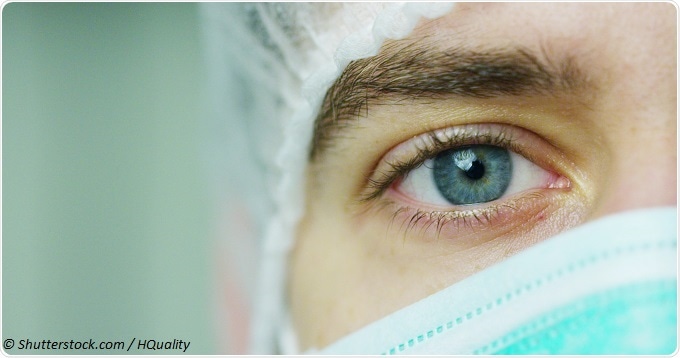An interview with Dr. Justin Barad, CEO, Osso VR, conducted by April Cashin-Garbutt, MA (Cantab)
Can you please outline Osso’s vision?
Osso’s vision is to improve patient safety and outcomes by addressing the critical training issues facing the modern surgeon. The situation is urgent:
- With new work hour restrictions in the US and worldwide, residents have lost over a year of training time
- Up to 40 percent of that time is spent working with Electronic Medical Records systems
- More than 90 percent of residents now go on to additional years of training in fellowship
- Patients are seeing increasing complication rates with newer and more complex medical technology and procedures
- In one study examining the case logs of graduating residents, only 15 percent of 121 critical procedures were performed more than 10 times during the 5-7 years of surgical training
With our unique team and the power of the recent revolution in immersive reality technology, we are finally able to address these issues by providing a highly mobile, hands-on, realistic training platform that allows practitioners to learn or review complex surgical procedures without risking patient safety.
How are the immersive simulations developed and how do you make sure they are accurate and realistic?
Design thinking is at the core of our simulation development process. Osso’s support network is filled with an abundance of diverse and key stakeholders including surgeons, nurses, med students, surgical techs, device sales reps, and education professionals.
Adrienne Hunter, our experience design director, and our team of designers leveraged this network to answer “Where, what, and how”:
- Where are the training gaps in this particular device or procedure?
- What gaps can we address with our technology?
- How do we fill those gaps?
We then proceed to implementation.
At Osso we utilize an unusually high frequency testing and feedback process with rapid development sprints. This way we receive nearly constant input from subject matter experts on our interactions and overall simulation design to allow for a hyper iterative process.
The icing on the cake is our CTO, Matt Newport, who is an EA alum and has been in AAA game development for 15 years. Even more importantly, Matt has a degree in psychology, which is critical for anyone doing VR development so that they can anticipate exactly how a user will mentally experience a simulation.
We want to make sure our simulations are not only realistic, but effective. Leading the validation effort is the chair of our scientific advisory board, Dr. Tom Krummel, who served as chair of surgery at Stanford for 15 years and is co-director of Stanford’s Biodesign program. In addition, he is a recipient of one of the first NIH Phased Innovation R21/R33 programs to develop collaborative simulation-based surgical training systems, receiving two ComputerWorld Smithsonian Awards for his work.
Our first IRB-approved validation study is being performed at UCLA under the direction of Dr. Nelson Soohoo, UCLA’s orthopaedic residency program director.

What type of medical device companies do you work with? Are you currently specializing in any particular types of orthopedic procedure?
We are working with top tier medical device companies at the moment. Our platform is flexible enough to simulate any procedure. At the moment, within orthopedics specifically, we are very excited about the arthroplasty and trauma spaces.
Does Osso plan to expand into other specialties and procedures?
Without a doubt. The training challenges facing orthopedic surgeons are also facing practitioners from all procedural disciplines. We are already in the prototyping phase in both the interventional and cardiac spaces.
We plan on continuing to utilize the Osso model of having specialty units driven by subject matter experts. These specialty leads have deep insight into their specialty’s procedures and devices so that our partners don’t need to worry about teaching us and our team what takes a typical person about 10+ years to learn.
What impact do you hope Osso’s platform will have on surgical training?
Surgical training is currently very much still an apprenticeship model, which has been its foundation for more than a century. This leads to quite a number of issues. For one, your experience during residency is somewhat random.
For example, a co-resident of mine completed his two-month hand surgery rotation without having performed a single distal radius fracture just because “it never came in.” Because you are relying on statistics and chance for your procedural experience, residencies are quite lengthy so that you can get the required exposure.
With technology like Osso’s, I’m hoping that surgical training will become more standardized with a more predictable result. Furthermore, through this standardization I’d be ecstatic if we could shave one or two years off of surgical training.
There is another component to surgical training that affects users of all skill levels, and that is the use of medical devices. Numerous new devices are released annually, and sometimes are completely novel procedures. Even a highly experienced surgeon requires training on technology like this. With Osso, I hope patients can get access to cutting edge medical technology faster and safer so that they can get the treatment they so badly need.
What feedback have you received from surgeons using the training platform?
Feedback from surgeons has been incredibly enthusiastic. Dr. Soohoo at UCLA stated “Osso VR's virtual reality platform fits an important need in surgical training. This type of simulation allows for an intuitive understanding of how procedures are actually performed that is difficult to grasp from traditional methods of learning like textbooks or videos.
It would typically require expensive cadaver or bone model sessions to get at this type of learning but Osso VR now offers an accessible and cost-effective tool for surgical skill education"
Another senior and prominent joint surgeon told us that he had never played a video game in his life, yet found Osso to be quite intuitive, stating, “I was very impressed with your system... My sense of this is as an economical, highly mobile, training system to … augment and perhaps substitute for our cadaver labs and sawbones."
How have VR headsets advanced over recent years and what further developments do you see in the pipeline?
Having used a fair amount of VR in the 90s, where it has come today is completely unbelievable. The Oculus Rift Kickstarter in 2012 began nothing short of a revolution when it comes to immersive technologies. The rapid progress of the hardware and the software that drives it is an article in itself, but I will provide a few key areas where I see some major leaps coming.
- The convergence to stand-alone headsets
Right now, a high-end VR experience requires a headset connected via wire to a powerful computer, two controllers and two cameras (or lightboxes in the Vive’s case). In just a few months, Microsoft and google are releasing devkits for devices that don’t require cameras thanks to what is called “inside-out tracking,” and in Google’s case (and Qualcomm’s to be fair), don’t require a computer at all. It is clear that VR is going to become far more convenient and portable in a remarkably short period of time.
- Improvements in hand tracking and haptics
The current VR controllers are simply incredible, and have to be experienced to be believed. But what if we can take this a step further? Finger-tracking gloves allows you to more realistically and dexterously interact with virtual worlds. Companies like AxonVR are going all-in on not only developing this finger tracking technology but also by powering a new generation of haptics behind it to really let you feel and interact with these worlds in an unprecedented and natural way.
- Improvements in display and eye-tracking technologies
Eye-tracking is a critical feature to unlock the potential of immersive technologies. Eye-tracking allows the use of more advanced displays that solve the vergence-accommodation challenge by allowing you to focus naturally on objects just as in real life. It will also allow for Foveated rendering, which will drastically decrease the cost and performance requirements of the computers powering these devices. And finally, eye-tracking can help make social VR experiences even more compelling than they already are today.
What do you think the future holds for surgical training?
The world is moving at an incredible pace. What we think we know today may not be true tomorrow. Technology is continually giving us the tools to address diseases and pathology that we once thought were untreatable. Unfortunately, without the tools to learn how to use this technology, it will either not see the light of day or may actually harm people.
It is time to take a long hard look at the medical training process. There is a problem when someone undergoes 11-13 years of training and STILL feels unprepared to take care of patients. In fact, in that time period it is likely that much of what they learned is no longer true due to the blistering rate of scientific knowledge turnover. Furthermore, our very role in healthcare delivery is becoming increasingly unclear as AI and robotics are on a path to supplant some of our function.
We can address these issues today. We have the tools. We only need the courage to ask ourselves hard questions and to set aside dogma, bias, and pre-judgement in order to create a system that will ensure a bright future for patients and those that care for them.
Where can readers find more information?
Readers can find more information by visiting www.ossovr.com and following our developments on Facebook and Twitter.
About Dr. Justin Barad
Justin Barad, MD is the co-founder and CEO of Osso VR, an award winning surgical training platform helping to increase patient safety and the adoption of cutting edge medical technology.
Early in Dr. Barad’s career, he fully intended to become a game developer, but when he realized he could use his technology background to help people, he moved into medicine.
With a strong interest in gaming and a first-hand understanding of the challenges facing residents and experienced doctors, he co-founded Osso VR. This technology allows surgeons of all levels to practice with the latest medical devices through a fully immersive, hands-on virtual reality simulation.
In addition to managing his company, Dr. Barad is also a board-eligible orthopedic surgeon with a Bioengineering degree from UC Berkeley, and an MD from UCLA where he graduated first in his class.
He completed his residency at UCLA, and his fellowship was in pediatric orthopedics at Harvard and Boston Children's Hospital. Dr. Barad has written for Medgadget, a popular medical technology site, for more than a decade and has spoken at top-tier digital health conferences including the CES Digital Health Summit, Exponential Medicine, and Health 2.0.